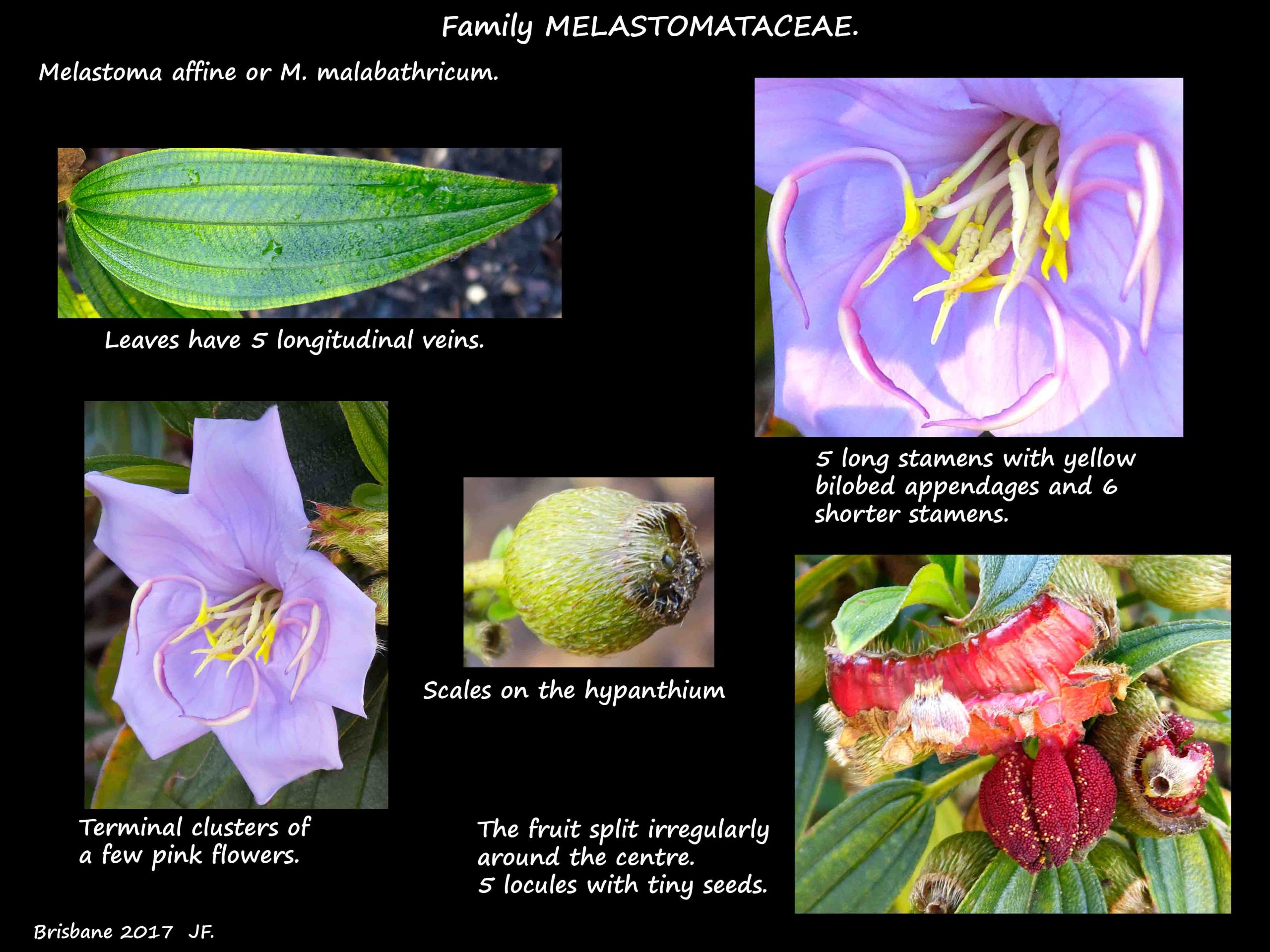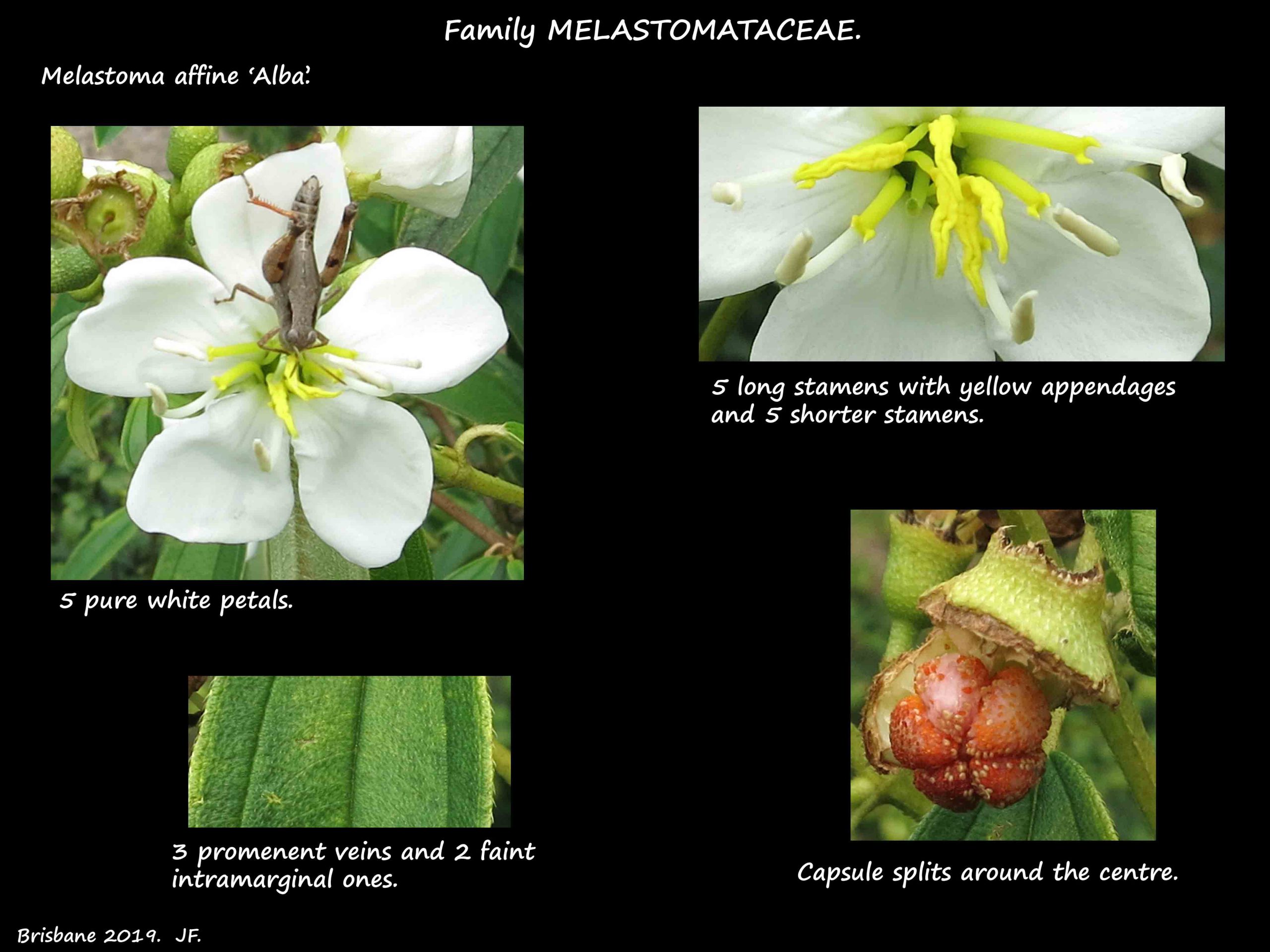Melastoma malabathricum or Melastoma affine.
M. malabathricum is the type species of the Melastoma genus.
Its variable appearance has resulted in many names that are now mostly regarded as synonyms.
These include Melastoma denticulatum, M. polyanthum and M. novae-hollandiae.
Commonly known as Native Lisiandra it is sometimes seen in Brisbane parks and gardens.
A shrub up to 2 or 3 m high and 2 m wide.
The thin 4-angled stems are covered in small scales with marginal cilia.
The long stem hairs at the base of the petioles resemble stipules.
The opposite leaves, on hairy 8 mm petioles, are ovate to elliptic.
They are up to 12 cm long and 4 cm wide with a pointed tip.
The stiff hairs that lie flat on both surfaces are more numerous on the upper.
There are 3 distinct longitudinal veins and 2 faint intramarginal ones.
The small clusters of up to 10 closely spaced flowers are terminal or nearly so.
Flowers are up to 5 to 7 cm across with 5 (6 – 7) sepals and petals.
There are 2 large bracts that fall off.
The 5 to 10 mm long hypanthium has flat scales with small marginal cilia.
The sepal lobes, about 4 mm long, have dense scales and some hairs.
Petals are pink, violet, mauve or purple and rarely white.
There are typically 5 long and 5 shorter yellow stamens.
The longer stamens have a yellow bi-lobed appendage.
There are dense hairs on the top of the ovary.
The 1 cm fruit split open irregularly around the centre.
Inside are many tiny seeds in the red to purple flesh.
They are easily confused with the introduced Tibouchina granulosa and Melastoma candidum.
T. granulosa has purple stamens and M. candidum has leaves with 5 very distinct veins.
Melastoma affine alba.
The White flowered Native Tibouchina is a bushy shrub up to 2 m high.
J.F.



